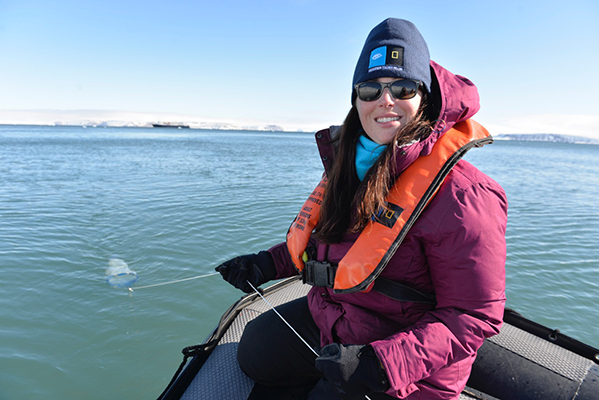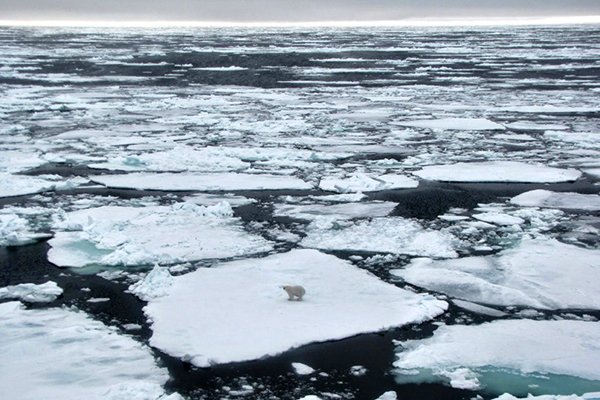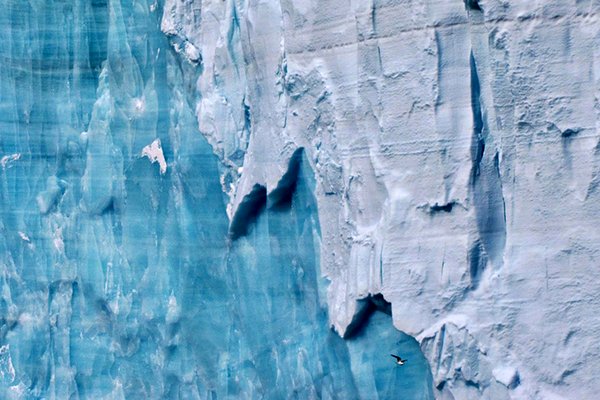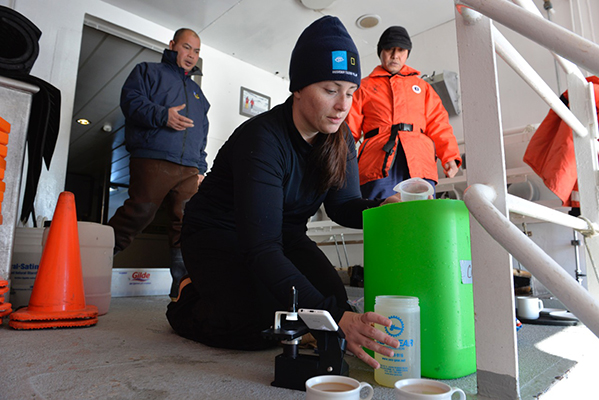Cristina Veresan’s impressions from the Arctic Svalbard
Logbook / Written by Cristina Veresan / 17 Aug 2014


Traveling from Hawaii to Arctic Svalbard was a radical change, but I was so eager to explore this pristine, remote region of the world aboard the National Geographic Explorer as part of my Grosvenor Teacher Fellowship. I found the high Arctic to be a harsh, sparse, and beautiful environment.
This log is published in Kahi Kai logbook / Title image credit: Cristina Veresan
READ 8674 TIMES / 0 COMMENTS

Towing for some plankton

Ready to tow

Preparing the plankton net

Icescapes

Arctic mountains

Leave some space

Arctic birds

Walrus

Arctic colors

Ice bear

Longyearbyen, Slavbard (Norway)

Preparing the plankton sample

Arctic plankton observed with the CellScope
Cristina Veresan teaches middle school science at Star of the Sea School in Honolulu, Hawaii, and she enriches her curricula with the unique natural and cultural history the island provides. A passionate marine educator, she volunteers at the Waikiki Aquarium and has participated in plankton outreach with Kahi Kai.
The weather was cold by Hawaii standards, but with temperatures ranging from about 30-40°F, I had enough gear to keep me warm. On account of our high latitude within 10 degrees of the north pole, the sun never went below the horizon, so I got to enjoy the scenic wilderness at all hours.
Svalbard’s wildlife was spectacular. We had the opportunity to view three different polar bears close to the ship, and it was a thrill to observe the bears in their natural habitat, the ice and water. We also saw the two favorite prey of polar bears, ringed seals and bearded seals and had encounters with walrus, arctic fox, reindeer and lots of different seabirds. When we went ashore, hiking on the spongy tundra was a great surprise. The very top layer of permafrost had thawed and there was vegetation, even wildflowers, thriving in these extreme conditions.
There were so many unique experiences on my Lindblad Expeditions-National Geographic voyage, but I most enjoyed our time in the pack ice. At one point, we also cruised along the face of the third largest ice cap in the world, Austfonna. The fresh smell, the crackling and colors were so vivid. Looking up at the massive face of the glacier was humbling. During the expedition, I learned a lot about the effects of climate change and that moment gave me a sense of urgency about protecting our polar regions.
Plankton were on my mind, however, and about halfway through the voyage, I finally got a chance to conduct a plankton tow and use Kahi Kai’s Cell Scope for mobile microscopy. The plankton net is a funnel shaped, fine-meshed net connected to a plastic bottle. When the plankton net is towed through water, you get a concentrated sample of plankton in the bottle. The ship’s first officer Piers took me out in a Zodiac for the tow, and with us was famed National Geographic photographer Sisse Brimberg to capture the action. We cruised by Idunbreen glacier and I gripped the tow line as the plankton net streamed behind us.
When I got back aboard the Explorer, I could see lots of organic matter suspended in the sample and, thankfully, some swimming plankton! I took a cursory look at my sample in the Zodiac landing area but quickly realized I needed to find a more suitable spot. I took my sample and the Cell Scope up to the Observation Deck where I could interact with guests and enjoy the majestic alpine scenery. My focus was not necessarily to identify the plankton but to expose guests to this previously undetected microscopic life.
Over and over, I used a plastic dropper to draw up a small amount of water to put on a slide, put the slide on the Cell Scope, and tried to find as much plankton as possible. I was happy to explain to guests what I was doing and share my passion for plankton. Some guests put their iPhones in the Cell Scope and attempted to find and photograph plankton themselves. I let them know that we all depend on plankton not only for supporting marine food chains but also for the oxygen they release during photosynthesis. Everyone seemed to have newfound appreciation for plankton!
My expedition through Arctic Svalbard was indeed a voyage of discovery, for I have seen new sights as I explored an entirely different environment, and I have returned to see familiar sights with new eyes. I am grateful to National Geographic and Lindblad Expeditions for the voyage of a lifetime, and I appreciate Kahi Kai enhancing the experience by offering a perspective on the tiny ocean life that makes a big impact.
No comments have been added yet!